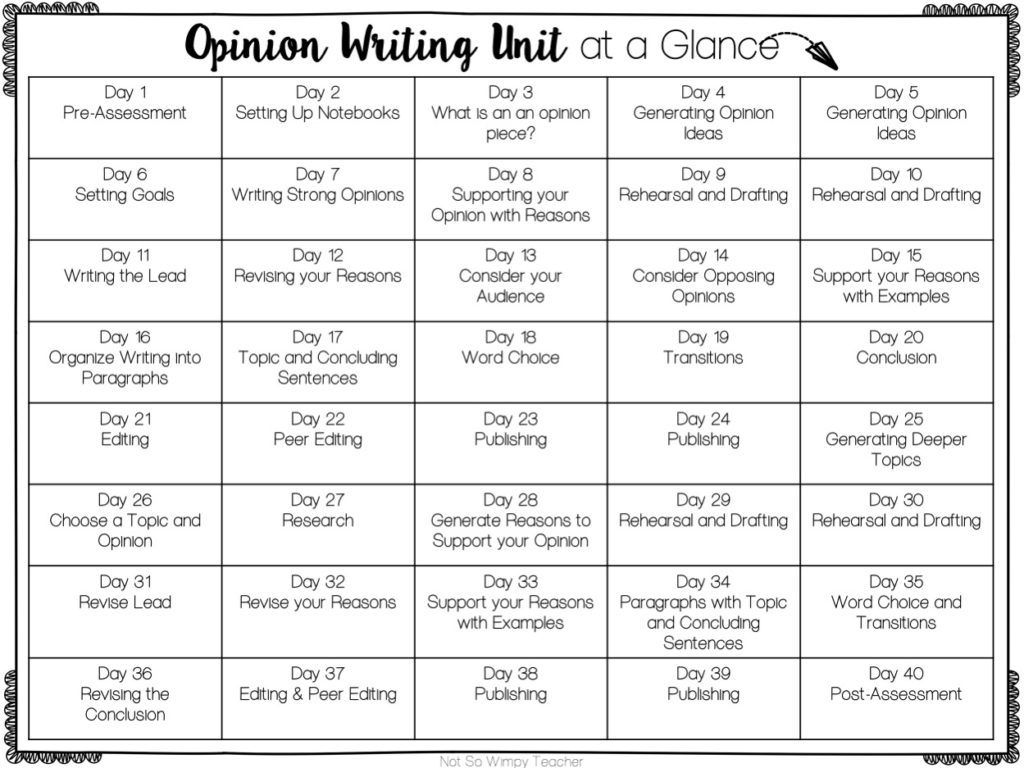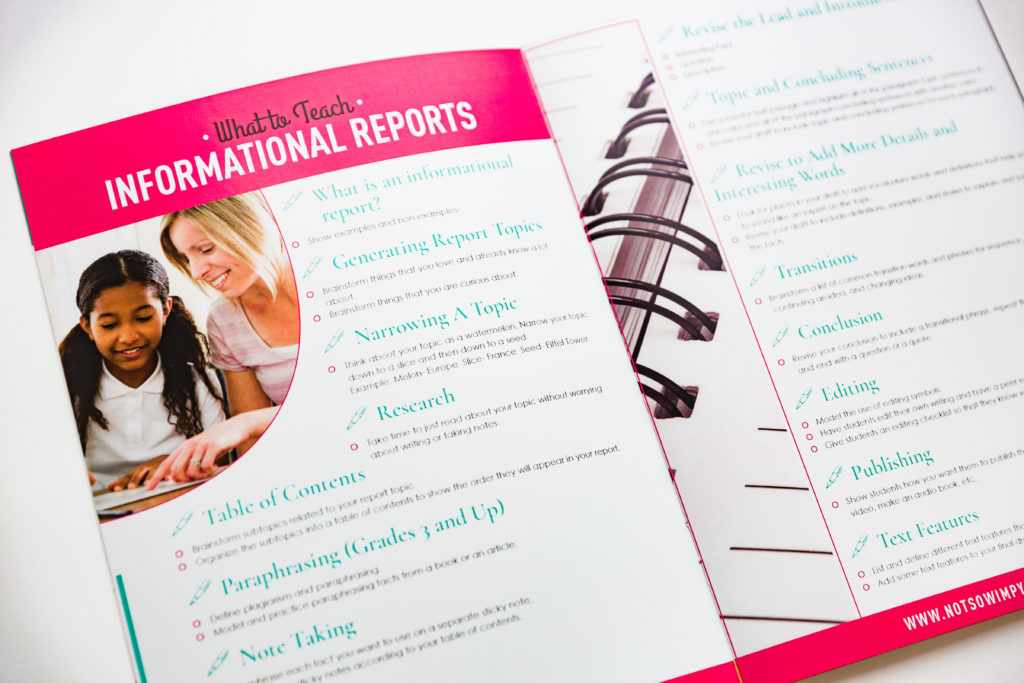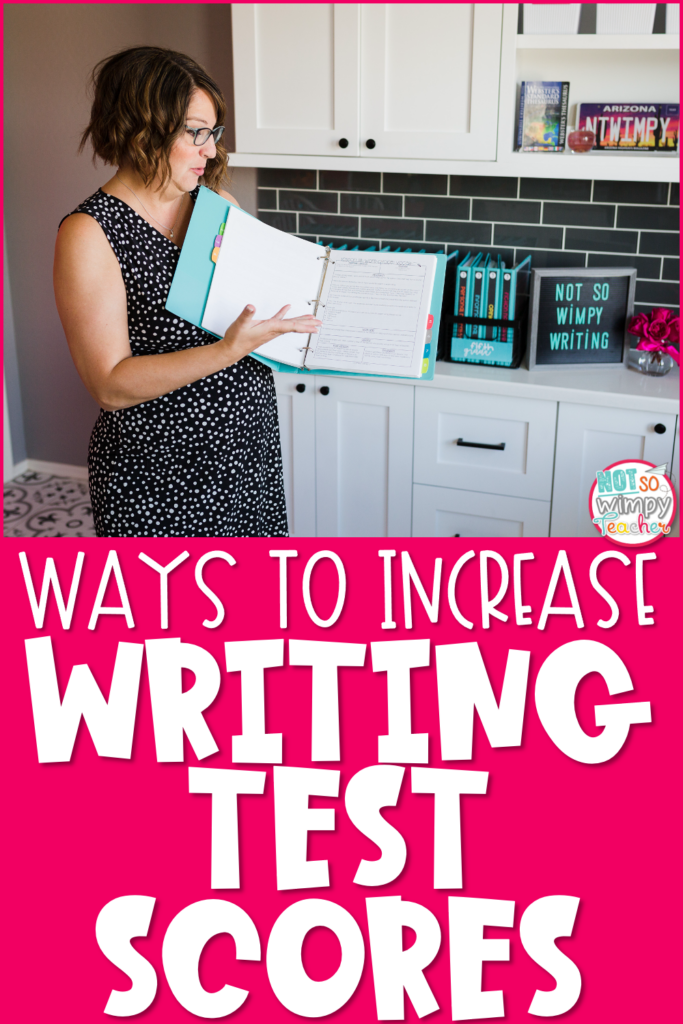
Do your students have a writing portion of their standardized tests? Most states require this for grades three and up, and there is a lot of pressure on teachers to increase writing test scores. So here are some of my best tips for increasing those darn standardized writing test scores…
Start at the Beginning of the Year
Every February I will see posts in my Facebook groups that look something like this, “How can I prepare my students for standardized writing tests?”
The fact of the matter is that if you wait until February, you are going to be way behind. Writing is complex and should be taught all year.
When I say that writing should be taught all year, I am referring to actual lessons and not just projects, journals, and craftivities.
Giving students a writing assignment is not the same as teaching them the skills and strategies that are required to write strong reports and essays. In reality, we end up teaching to the project rather than focusing on skills that will benefit the writer in every other piece of writing that they do.
Just as you teach reading and math all year…you must also teach writing all year. The teacher who has the highest student writing scores is almost always the teacher who committed to an entire year of writing workshop.
Break Lessons into Bite Size Pieces
If you want to increase writing test scores, then you probably need to decrease the length of your writing lessons. Because we are a chatty and overachieving group- we tend to talk too much and try to cover too much with one lesson.
Break down your lessons into very small bite-size pieces.
For example, I teach my students two different strategies for generating a personal narrative story topic. It’s tempting to do that all in one day. But resist the urge! Instead, I teach one strategy each day.
Breaking the lessons into smaller pieces gives students time to practice the strategy and makes it more likely that they will commit it to memory and use it in the future.
Writing mini lessons should be about 10-15 minutes of teaching. That’s it!
When we try to teach too much in one lesson, students don’t get enough time to actually write! They spend all of their time listening to the teacher talk.
The true growth happens when we get writers back to their seats and put a pencil in their hands!
So, if your lesson can’t be taught in less than 15 minutes- break it down into two days of lessons.
Here is an example of how I break down my opinion writing lessons.

Yes, it takes more time to teach everything when you break it down into multiple days. But the good news is that you end up having higher rates of mastery and spend less time reteaching!
You can find more tips for teaching mini lessons here.
Focus More on Writing Skills than Mechanics
When we look at student writing, the mechanics stand out to us. We notice the misspelled words, lack of capitalization and punctuation, and poor grammar. As teachers, I think these errors are glaring to us.
But here is the thing…there is so much more to writing than mechanics! If all we look at and focus on is the mechanics, then we are missing so many opportunities. That’s one of the reasons I took grammar out of writing workshop.
I want students to use leads that hook readers, strong opinion statements, and paragraphs with supporting details and facts. I want students to use dialogue and details to make their writing more interesting. They should be able to end their essay with a call to action or a fact that makes their writing memorable.
All of these writing skills are far more important than mechanics.
If you don’t believe me, take a look at your rubric. I bet that at least 80% of the possible points are based on writing content rather than mechanics.
In this rubric, I highlighted all of the points that are content-based rather than mechanics.

A student who loses almost all of their mechanics points can still score high using this rubric!
But, on the other hand, someone can have perfect spelling and grammar and fail the writing sample if they do not earn most of the content points.
The moral of the story is that we need to be spending most of our writing lessons and conferences focused on content! If 80% of the points are based on content, then at least 80% of our teaching time should be spent teaching the content strategies.
Not sure what lessons you should be teaching? I made a FREE GUIDE for you!

The guide includes a list of all of the different lessons you will want to teach. It takes the guesswork out of deciding which skills need to be introduced!
Teach Writing in Units of Study
I have gotten lots of strange looks when I have told teachers that I spend an entire eight weeks on just one genre of writing.
“Don’t students get bored?” they ask.
Nope! Students enjoy writing more when they start to feel good at it. By spending more time on one writing genre, I give my students the opportunity to gain confidence!
Teaching in units of study means that you teach an entire unit on each writing genre rather than moving back and forth between the genres throughout the year.
I used to go back and forth between genres. One week, we would write an informational report. The next week, we would be writing opinion letters. Then we might do some fiction stories, and a month later, we would write another informational report.
Guess what happened…
Most of my students could not remember the skills that were needed for the different writing genres.
By the time we came back to informational writing, they had completely forgotten how to organize their writing or what to include in the introduction.
The problem is that I was not giving them enough time to master informational writing before we moved on, but I still expected them to remember it weeks later.
If you really want your students to become better writers and increase writing test scores, teach writing in long units. Give students time to learn, practice, and master a genre before moving on.

You can teach the units in any order that you choose, but this is the order that I prefer:
- Personal Narrative
- Informational
- Opinion
- Fiction Narrative

I hope these tips get you thinking about ways to revamp your writing instruction next year so that testing season is a tad less stressful and the scores are a whole lot higher!
Have a Not So Wimpy Day,




















 End of Year Carnival Week for grades 2-5!
End of Year Carnival Week for grades 2-5!
Thank you for your dedication to education. I have been teaching for 43 plus years and have gradually come to the same conclusion as you – to teach writing in small manageable chunks. This took me many years of teaching and lots of PD both on-line and face to face to learn. What you are doing here is fast tracking so many educators and saving them this time. I love your rubric too, the way that it gives so much credit to the authorial side of writing – so important. I am nearing retirement and having a bit of a culture shock, having to take in so much on-line learning. But I am a true believer in life time learning – just wish it wasn’t under these circumstances.
Thank you again – keep safe and well.
This was my first year teaching and the worst time of day for me was writing. The kids disliked doing, they complained, they didn’t apply themselves, I wanted to pull my hair out. I even stopped writing and focused on mechanics of writing. I received an email from you that caught my attention and I decided to try your writing bundle. After Christmas break we started Opinion Writing. It took a few days but the students started taking to it, and it was so easy to follow your daily lesson plans. Students started telling me that writing wasn’t so bad, and they became interested in what they were writing. Of course, COVID-19 put a damper on how great this year could have ended but I have definitely learned a lot and have a better outlook for next year. Thanks for a great product.